 How Award-Winning Student Newspaper Editorials Framed COVID-19
How Award-Winning Student Newspaper Editorials Framed COVID-19
By Brittany L. Fleming
and Emily A. Dolan
Slippery Rock University
Abstract: The current study explored the content of initial COVID-19 editorials from award-winning student newspapers across the country in an effort to understand how these editorials framed the issue. Using both qualitative and quantitative analyses, we found that top student newspapers framed the issue largely around morality and economic issues. Other frames were also employed (e.g., conflict), albeit to a lesser extent. Our analyses also provide details on the common language editorials employed within each frame and how frames were strategically employed across editorials. Our discussion provides an in-depth analysis of the structure of initial COVID-19 editorials and a framework for editorial reporting on crises in the future is proposed.
Introduction
The World Health Organization declared COVID-19 a national pandemic on March 11, 2020. As universities around the country began responding with announcements of extended spring breaks and the transition to online learning, student journalists working at college newspapers were forced to react to an unprecedented situation. In addition to news coverage, many decided to publish editorials addressing the situation, and in these editorials, they had to choose which angle or frame to address the impact of COVID-19. Given the importance of editorials in news discourse (Bonyadi and Samuel 2013), it is important to understand the content of these editorials, and specifically those that first addressed the COVID-19 pandemic, in an effort to understand how student newspapers can and should consider framing in the editorial process, especially in response to a crisis.
The current study examined the language of initial COVID-19 editorials in an effort to not only understand how these articles framed the crisis, but also to develop a framework for student newspaper editorials to follow in a crisis. Following a similar framework as other studies examining student media content (e.g., Bergland 2020; Brockman, Bergland and Hon 2011; Terracina-Hartman and Nulph 2016), we focus specifically on the first COVID-19-related editorials published online by 21 student newspapers that have been recognized as finalists in major student journalism contests in the last three years. Our investigation includes a combination of two content analysis techniques: a quantitative analysis using the Linguistic Inquiry and Word Count (LIWC) program and a qualitative textual analysis.
Examining the editorial content focusing on the COVID-19 pandemic from top student newspapers has implications in both applied and theoretical contexts. Given the caliber of the national contests used in this study, it can be assumed that student newspapers that earn recognition through these organizations serve as exemplary publications. From an applied perspective, understanding the content of top student newspaper editorials focusing on COVID-19 would provide student media advisors and student journalists with a framework for addressing crises through editorials in the future. By using the LIWC program to examine language associated with framing, student journalists may be able to identify how language plays into different frames and the importance of carefully selecting language within editorials in order to achieve their intended goals. With both these applied and theoretical contributions in mind, we hope our observations and conclusions will help contribute to the progression of the field of student journalism.
Literature Review
Student Newspaper Editorials
Student newspapers define themselves as forums for student expression. Files (1987) argues that whether a student newspaper fulfills this role tends to rely on four questions, one of which refers directly to the inclusion of editorials: “Is the publication open to free expression of ideas in news and editorial columns as well as in letters to the editor?” To that end, newspaper editorials continue to play a vital role in shaping society’s agenda and opinion. Newspaper editorials may be published as a way to bring relevant issues to the attention of the public or authorities, or in response to a specific event (Eilders 1997; Marques and Mont’Alverne 2019). Editorials require a thoughtful selection process, as the purpose of an editorial isn’t merely to inform, but, in many cases, is to persuade the readers to subscribe to the ideology of the paper (Alfred and Oyebola 2019). The power of a newspaper is undeniable, and this assertion may even prove to be truer in a time of crisis (Valentini and Romenti 2011).
Through coverage, media contribute to shaping public opinion about specific situations, actions, and/or organizations’ behaviors, particularly in the instance of a crisis (Valentini and Romenti 2011). This includes whether the newspaper decides to employ editorial writing to take a definitive stance on an issue, in which case the newspaper’s news and opinion agenda temporarily align (Adam et al. 2019; Eilders 1999).
Marques and Mont’Alverne (2019) describe editorial writing as a strategy journalistic organizations use to present opinions and propose debates on issues of social relevance. Unlike traditional news coverage, editorials function as the “mouth-piece of a social class” and ultimately, through facts and valid arguments, intend to persuade readers to agree with their stance on a particular issue (Alfred and Oyebola 2019). Because of this proposed underlying intention and the significant difference between news reporting and editorial writing, it can be argued that editorials are particularly robust artifacts for examining press attitudes toward issues of controversy and, in turn, should be investigated (Eilders 1997; Richardson and Lancendorfer 2004).
There is a lack of research on editorials in both commercial and student newspapers (e.g., Firmstone 2008; Marque and Mont’Alverne 2019). Because of an editorial’s topic-specific nature, much of the research that does focus on newspaper editorials utilizes a content-analysis methodology to investigate a series of editorial perspectives through the lens of framing (Richardson and Lacendorfer 2004; Valentini and Romenti 2008). Boyandi and Samuel (2013) found that, from the start of the headline, editorial writers not only aimed to inform the audience of the topic of the editorial, but also used persuasive and rhetorical devices to express the newspaper’s preferred ideology. Similarly, studies in transitivity have found that editorials may syntactically position subjects in a controversy based on the staff’s attitudes and beliefs (Alfred and Oyebola 2019).
Student newspapers may publish a variety of editorials about a particular situation over time. However, it can be argued that the first editorial published about an issue is possibly the most important editorial, as it sets the tone for successive editorials about the situation. From an audience perspective, the first editorial to emerge about a situation helps to provide an initial frame of reference for audiences (Entman 1993) and allows them to know the newspaper’s perspective on a given issue. Past research (e.g., Kuttschreuter, Gutteling and De Hond 2011; Gortner and Pennebaker 2003) examining initial editorial content on a given issue further emphasizes this point. Therefore, understanding the content of editorials, and particularly the first editorial published about a given issue, is incredibly important.
Framing Editorial Content During a Health Crisis
When covering a given issue, journalists make a series of choices throughout the news process, specifically how to frame the issue. The COVID-19 pandemic, for instance, may be framed in a myriad of ways: public health, risk, economics, and conflict. When considering the issues covered in editorials covering a crisis like the COVID-19 pandemic, a useful theoretical paradigm is framing. Entman (1993, 52) argues, “To frame is to select some aspects of a perceived reality and make them more salient in a communicating text, in such a way as to promote a particular problem definition, casual interpretation, moral evaluation, and/or treatment recommendation.” Issue frames provide readers with heuristic cues that allow them to view an issue through a specific lens, and as such, they call attention to some aspect of an issue while ignoring others. As an effect, issue frames influence how audiences perceive, evaluate, and remember a story (Entman 1993; Entman 2007). The connection between issue framing and public perceptions of issues has been demonstrated across countless studies examining news content (e.g., Nelson, Clawson and Oxley 1997; Richardson 2005).
Previous research identifies common frames across news content covering crises (e.g., An and Gower 2009; Semetko and Valkenburg 2000; Valentini and Romani 2011). These frames include (1) Agent of responsibility, which addresses the individual(s) or groups responsible for the crisis; (2) Morality, which addresses moral tenets, such as religion and social processes; (3) Human interest, which addresses emotional components; (4) Economics, which considers money and work-related factors; and (5) Conflict, which addresses conflict between individuals, groups, and/or organizations. Given the nature of the COVID-19 pandemic, we propose two additional frames: Risk, which focuses on the dangers and threats associated with a crisis, and Health, which focuses on framing pertaining to physiological and mental wellness.
The Current Study
The current study examined the framing of initial COVID-19 editorials published by top student newspapers in effort to understand how student newspaper editorials first covered the issue. To gain an in-depth understanding of the framing of these editorials, we employed two types of content analysis: quantitative LIWC coding, and qualitative textual analysis. Our sample comprised the first COVID-19-related editorials published online from 21 award-winning student newspapers from major student journalism contests over the last three years. This list of selection criteria is similar to other studies examining content of student media (e.g., Brockman, Bergland and Hon 2011; Terracina-Hartman and Nulph 2016; Bergland 2020). A central research question guides this study: How was the COVID-19 pandemic first framed by top student newspapers in their editorials?
Methodology and Data Analysis
Sample
In effort to understand best practices for collegiate newspapers when first covering a crisis, we collected the first student newspaper editorials published that covered the COVID-19 pandemic. We chose to employ a methodology used in past newspaper research and obtained lists of the 2017, 2018, and 2019 Associated Collegiate Press Newspaper Pacemaker, Columbia Scholastic Press Gold Crown, and College Media Association Pinnacle award winners from four-year degree-granting institutions (Bergland 2020; Terrancina-Hartman 2016). Any newspaper that won the award more than once was included only once in the sampling frame. A total of 34 collegiate newspapers were included in the sampling frame, and of those newspapers, 21 newspapers (62 percent) featured an editorial about the COVID-19 pandemic.
Collection period
Because the World Health Organization (WHO) declared COVID-19 a global pandemic on March 11, 2020, we used this date as the start date for collecting editorials. Data collection ended April 17, 2020.
Editorial Selection Criteria
We selected the first COVID-19-related editorial published in the aforementioned sampling frame. This inclusion criteria were employed by examining the headlines and body of editorials published in our time frame. If an editorial addressed any aspect of COVID-19 in the headline or body of the editorial, it was included in this study. Both staff editorials and letters from the editor were included.
 Table 1. Sample
Table 1. Sample
Data Analysis
To explore our research question, we used a combination of quantitative and qualitative data analysis. Quantitatively, the texts of the 21 COVID-19 editorials were submitted to the LIWC program. One way to reveal frames and tone of voice in media content is through an examination of the linguistic content of news stories, specifically by examining the words used (Entman 1993). The LIWC program provides a means to accomplish thistask. LIWC is a text-analysis program that analyzes text and counts the percentage of words that represent different types of linguistic devices, grammar and psychological processes. (Tausczik and Pennebaker 2010.) This program has been used and validated in studies examining the psychological meaning behind language (Tausczik and Pennebaker 2010) and captures over 86 percent of the words people use in communication (Pennebaker, et al. 2015). This program has also been used and validated in studies examining news and editorial content (e.g., Gortner and Pennebaker 2003; Pennebaker, et al. 2015) and has emerged as a unique way to capture systematic patterns in the framing of news and editorial content.
We used the LIWC program to code for five major frames identified in previous research as well as the two additional frames proposed in this study. See Table 2 for each frame, their LIWC coding categories, and examples of language falling under coding categories.
 Table 2. Frames, LIWC Categories, and Examples of Language with Categories
Table 2. Frames, LIWC Categories, and Examples of Language with Categories
Source: Examples of language partially derived from Pennebaker et al. (2015).
We used results from our quantitative LIWC analysis to complete a qualitative textual analysis of the editorials used in this sample. Doing so provided a means to triangulate upon and provide further context to our quantitative findings. We used Cresswell’s (2009) framework for qualitative data analysis to complete our textual analysis. This framework was used to analyze the editorials by extracting themes that appeared across editorials in effort to illuminate overarching themes within the entirety of the data. We used our quantitative LIWC findings to help us focus our analysis of framing, and specifically focused on patterns of how the common language within each frame was employed across editorials in effort to understand these frames in their totality.
Following Cresswell’s (2009) framework, qualitative analysis went as follows: First, each researcher reviewed the quantitative data from the LIWC analysis and independently examined how this language was employed across editorials. Each researcher took field notes. The researchers discussed their notes and then analyzed the data, frame by frame, to ascertain themes of the language employed within each frame. This analysis included factors such as (1) commonalities among editorials in terms of types of information and language covered within each frame, (2) where these frames appeared within the body of the editorial, (3) how headlines played into these frames, and (4) how the frames related to one another.
Results
We conducted analyses on the 21 editorials included in our sample. These editorials featured an average of 509 words. The shortest article featured 257 words, while the longest article featured 993 words.
RQ1: How was the COVID-19 pandemic first framed by top student newspaper editorials?
Each editorial was submitted to the LIWC program. This program coded every word within each editorial for the presence or absence of each of the LIWC categories related to the frames of interest. In total, 5,302 total words were examined. The following section reports the total number of words relating to each frame present across editorials. Figure 1 presents a pie chart detailing the prevalence of each of the seven frames we examined in our analysis. The LIWC program also details the specific language occurring within each frame; we present the language for each frame in the form of a word cloud. These word clouds feature the most prevalent language for each frame in large, prominent font. Guided by our LIWC results and previous research (e.g., An and Gower 2009; Semetko and Valkenburg 2000; Valentini and Romani 2011), we also conducted qualitative analyses for each frame to provide a more robust description of how initial COVID-19 editorials from top student newspapers employed each frame.
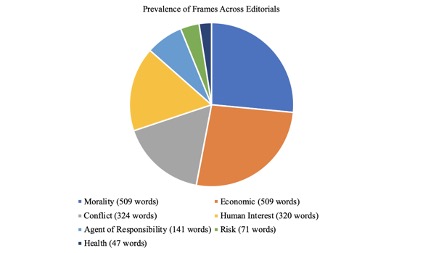 Figure 1. Prevalence of Each Frame Across Editorials
Figure 1. Prevalence of Each Frame Across Editorials
Risk and Health. To understand framing related to risk, we examined the LIWC category of risk. The LIWC program examined each of the 5,302 words contained across editorials for the presence or absence of 103 risk-related words (e.g., “danger,” “safety”). In total, 71 words across editorials contained risk-related language. Figure 2 details the language used within this frame.
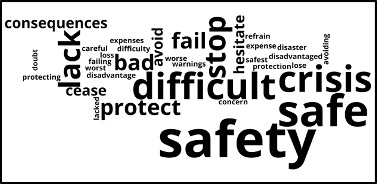 Figure 2. Word Cloud representing the language used in the risk frame
Figure 2. Word Cloud representing the language used in the risk frame
Similar results emerged for health framing. To understand framing related to health, we examined the LIWC category of health. The LIWC program examined each of the 5,302 words contained across editorials for the presence or absence of 294 health-related words (e.g., “clinic,” “flu”). In total, 47 words across editorials contained health-related language. Figure 3 details the language used within this frame.
 Figure 3. Word Cloud representing the language used in the health frame
Figure 3. Word Cloud representing the language used in the health frame
Results of our analyses indicate that the majority of editorials did not frame their coverage around health and risk. Of the editorials that did discuss health and risk, mention of these factors was fleeting. Our qualitative analysis suggests that health and risk appeared briefly in editorials in two major ways. First, many editorials that discussed health and risk discussed these factors in regard to how the newspaper planned on keeping their staff safe (e.g., “how we keep our staff safe while continuing to provide thorough, factual, responsible, well-reported information”). Second, many editorials mentioned health and risk briefly at the end of the article, almost as a sort of “sign off” to their audience (e.g., “listen to health officials. Wash your hands. And don’t go out in public unless it’s absolutely necessary”). Although there were two editorials in our sample that were framed largely around risk and health (e.g., headlines such as “Stay Home” and “It’s Time to Take Social Distancing Seriously”), our results indicate that despite COVID-19 being a situation of high risk and health concerns, editorials were not framed in ways that align with these issues.
The lack of framing around health and risk suggests that editorials were angled around other factors. If editorials were not framed in a way that tapped health and risk concerns, how did they frame COVID-19? Our results indicate that editorials framed COVID-19 largely in regard to economics and morality. We discuss our findings for these frames, as well as the three remaining frames, below.
Morality. To understand how COVID-19 editorials were framed in regard to morality, we examined a variety of LIWC categories. The LIWC program examined each of the 5,302 words contained across editorials for the presence or absence of 1,391 words across five LIWC categories: social processes (e.g., “talk”), affiliation (e.g., “ally”), family (e.g., “grandparents”), friends (e.g., “buddy”) and religion (e.g., “church”). In total, 509 words across editorials contained language related to morality. Figure 4 details the language used within this frame.
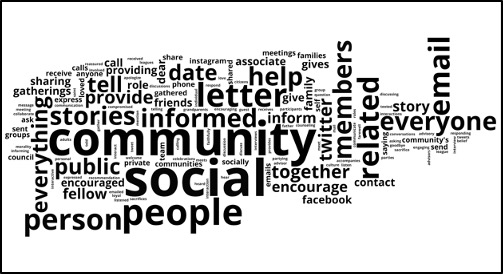 Figure 4. Word Cloud representing the language used in the morality frame
Figure 4. Word Cloud representing the language used in the morality frame
Conveying social affiliation in spite of physical distancing during COVID-19 emerged as a popular theme throughout the throughout the period of this study, as evidenced through PSAs, advertising and national-level publications. Results of our qualitative analysis indicate that student newspapers framed their editorials in ways consistent with the frames of other entities (e.g., “as a community, as a family, we all need to pull in and make sacrifices”). Editorials reinforced their relationships with their audience by letting them know that they would continue operating (e.g., “We’ve got your back, Kent State”) and by encouraging their audience to remain in contact with them via digital media technologies. Overall, editorials overwhelmingly angled themselves around creating a sense of togetherness, social connection and community with their audiences by conveying a “we’re all in this together” mentality.
Economics. To understand how COVID-19 editorials were framed in regard to economics, we examined two LIWC categories. The LIWC program examined each of the 5,302 words contained across editorials for the presence or absence of 670 words across two LIWC categories: work (e.g., “job”) and money (e.g., “cash”). In total, 509 words across editorials contained language related to economics. Although there were words related to money present, the “work” subcategory yielded far more data for this category. Figure 5 details the language used within this frame.
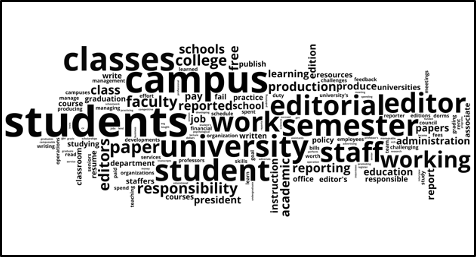 Figure 5. Word Cloud representing the language used in the economic frame
Figure 5. Word Cloud representing the language used in the economic frame
Our qualitative analysis revealed that within this frame, 12 out of 21 editorials focused on the publications’ action plans for delivering the news. Our qualitative analysis further revealed that within editorials delivering an action plan, the following features were typically included: (1) statement of commitment, (2) sense of community (e.g., “we’re all in this together), (3) how to access digital coverage, (4) the status of the print publication, and (5) means of contacting the newspaper. Therefore, editorials in our sample framed their stories largely around the economic-work-related implications of COVID-19 by specifically delivering their action plans for the remainder of the spring 2020 semester.
Conflict. To understand how COVID-19 editorials were framed in regard to conflict, we examined two LIWC categories. The LIWC program examined each of the 5,302 words contained across editorials for the presence or absence of 731 words across two LIWC categories: achievement (e.g., “success”) and power (e.g., “superior”). In total, 324 words across editorials contained language related to conflict. Figure 6 details the common language used within this frame.
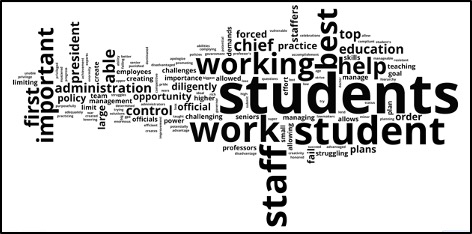 Figure 6. Word Cloud representing the language used in the conflict frame
Figure 6. Word Cloud representing the language used in the conflict frame
Our qualitative analysis provides strong evidence that the conflict discussed in editorials was largely centered around man versus nature. The virus itself was presented as a sort of antagonist and students were presented as victims to its effects. Many editorials started with conflict specifically by discussing the effects the virus had on students’ lives. This includes both the general student body as well as the staff of the publications. Although there were few exceptions to this rule, the majority of articles did employ a student-versus-virus conflict frame. In most cases when conflict was presented as students versus virus, after discussing this conflict, publications then moved into their main frames of the situation: economics and morality, which were used as a means of providing some type of solution to the conflict posed by the virus.
Human Interest. To understand how COVID-19 editorials were framed in regard to human interest, we examined a variety of LIWC categories. The LIWC program examined each of the 5,302 words contained across editorials for the presence or absence of 3,239 words across six LIWC categories: affect (e.g., “emotion”), positive emotion (e.g., “nice”), negative emotion (e.g., “nasty”), anxiety (e.g., “worried”), anger (e.g., “hate”) and sadness (e.g., “grief”). In total, 320 words across editorials contained language related to human interest. Figure 7 details the common language used within this frame.
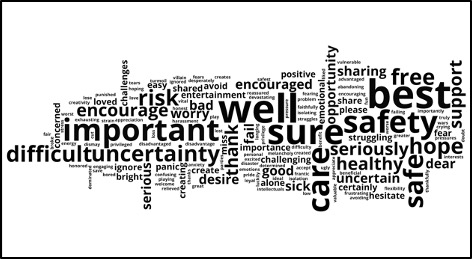 Figure 7. Word Cloud representing the language used in the human interest frame
Figure 7. Word Cloud representing the language used in the human interest frame
Our qualitative analysis indicates that in the majority of the editorials, words falling within this frame (e.g., “best”) were used to encourage readers to protect themselves and/or to stay informed through the newspaper (e.g.: “it’s important that students do their best to implement social distancing,”), or to describe the efforts the newspaper was taking to continue operating throughout the pandemic (e.g.: “continue to give our best as each day passes”). In either context, the majority of the editorials communicated a sense of optimism to their readers during a time of uncertainty. Many of the editorials included words that implied the severity of the issue, using phrases like, “Stay safe.” From a human-interest perspective, focusing on how to stay safe, rather than dwelling on the potential fear and anxiety of having to stay safe, further implies that the sampled newspapers aimed to frame their COVID-19 editorials in a more positive—as opposed to negative—light.
Agent of Responsibility. To understand framing related to the agent of responsibility, we examined the LIWC category of causality. The LIWC program examined each of the 5,302 words contained across editorials for the presence or absence of 135 causality-related words (e.g., “effect”, “because”). In total, 141 words across editorials language relating to agent of responsibility. Figure 8 details the language employed in this frame.
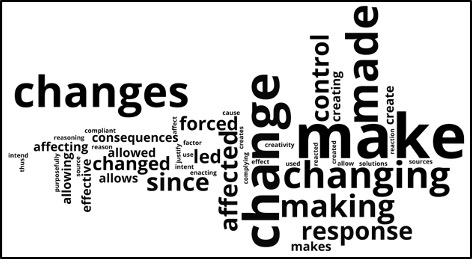 Figure 8. Word Cloud representing the language used in the agent of responsibility frame
Figure 8. Word Cloud representing the language used in the agent of responsibility frame
Our qualitative analysis of this content provides evidence suggesting the identity of the agent. Specifically, our analysis found that editorials were less focused on human parties as the agent of responsibility (e.g., administrations), and more focused on the virus itself as the agent of responsibility. Editorials were focused on the ways the virus was responsible for a variety of factors, including the shift to online learning and the functionality of the publication. Few editorials placed blame on administrations and students and instead blamed the pandemic for the changes.
Discussion and Conclusions
Our findings suggest that when dealing with a crisis such as COVID-19, it is important to first select a frame and then strategically select the language to use within that frame. Most importantly, as evidenced by our sample of top student newspapers, it is important to tailor messages directly to audiences, so that they are made aware of the effects the crisis has on them, as well as on their relationship and engagement with the publication. Furthermore, and likely in times of uncertainty and crisis, it is important to frame messages in ways that communicate affiliation in effort to allow audiences to know the publication stands in solidarity with them.
By triangulating qualitative and quantitative data, we were not only able to ascertain common frames employed across initial COVID-19 editorials, but we were also able to better understand how these frames were employed, how they co-occurred with one another, and the general structure of initial COVID-19 editorials. Our results suggest that while morality and economic frames were the most prevalent frames, other frames were also employed, just not to the same extent. While many editorials focused their stories on how the paper was going to proceed for the remainder of the semester, they also addressed other frames such as health and risk, conflict, and agent of responsibility, albeit to a lesser extent. There also appeared to be a formula to these editorials, such that the body of the editorial started out with a brief mention of conflict caused by the virus, and then quickly went on to discuss a solution to the conflict. These solutions included morality-related issues (e.g., sticking together) and economics-related issues (e.g., the newspaper’s work plans). These solutions comprised a bulk of the editorials, and thus were identified by the LIWC program as the two most prominent frames across editorials. While discussing these issues, editorials employed a human-interest angle by providing encouragement to their audiences to stay safe and informed. Lastly, the majority of articles provided some type of health and risk message, usually in a few sentences, encouraging audiences to stay safe and practice social distancing.
Given that our sample was comprised of the top student newspapers, and many common themes emerged across editorials, we believe our study may be used as a means of providing a framework for editorial reporting on crises in the future. This framework is discussed in the proceeding paragraphs.
First, we would be remiss to not address the fact that, of our sampling frame of 34 award-winning schools, 13 did not feature an initial COVID-19-related editorial during our sampling time frame. As an active student newspaper, it is important to address the audience during the time of a crisis and understanding the role an editorial plays during the time of a crisis is crucial. This leads us to our first recommendation: In times of crisis, it is important to address your audience in a timely manner.
Once a student newspaper decides to address a crisis in the form of an editorial, it is important to consider how to frame the issue. Issue frames call attention to some aspect of an issue while ignoring others. As an effect, issue frames influence how audiences perceive, evaluate and remember a story (Entman 1993; Entman 2007). Of course, in any given crisis, there is a variety of angles that can be covered while other angles are largely ignored. It is important for student journalists to consider the frames they employ and how these frames may co-occur. The current study identified language associated with each frame that was employed in the initial COVID-19-related editorials. Student journalists need to be cognizant of how language may play into particular frames of an issue, as these frames influence audience perceptions. For instance, student journalists might ask themselves, “Are we meaning to cover the story from a conflict position?” If the answer is no, then they must be careful of using language such as “forced,” “allowed,” or “limiting.” This leads us to our second recommendation: Pick a frame to focus on and be aware of how language plays into that frame, as well as others.
Our results demonstrate that multiple frames were employed across editorials, but to varying degrees. Although most of the editorials in our sample started with a conflict frame, the discussion of conflict was limited. After discussing the conflict, editorials moved on to possible solutions to the conflict. The solutions were the main frames employed in the editorials and comprised a considerable portion of the editorials. In the case of initial COVID-19-related editorials, the proposed solutions fell within the economics-work and morality frames, which may have been specific to the pandemic itself. Research demonstrates that editorials are oftentimes written in light of conflict; therefore, it makes sense that the conflict itself must be addressed. However, the weight of the editorial itself must focus on a solution, and the staff must select a specific angle from which to discuss this solution. This leads us to our third recommendation: A situation may call for multiple frames to be employed, but the main frame must propose some type of solution to the problem.
Students cannot employ these recommendations alone. In order to effectively communicate during a crisis, advisors and organizations need to provide assistance. Training materials and workshops should be conducted on both the local and national level to help student journalists understand the difference between news and editorial coverage, as well as how to employ these recommendations in the future.
Limitations and Future Research
The results in this paper cannot be generalized to the larger population due to our focus on only award-winning student newspapers from three major contests over the last three years. However, recognizing the caliber of these contests, the purpose of our paper was not to generalize, but rather to describe and propose a framework for how student newspaper editorials should cover a crisis. It is hoped that the framework proposed in this paper can be used to guide editorial writing in the future. Applying our proposed framework to different types of crisis situations (e.g., issues of social justice, politics, the economy, etc.) would likely be fruitful, as such research may be used to further understand and generalize these findings to student newspaper editorials as a whole.
Future studies should compare the framing between news stories and editorial coverage to further understand the totality of a newspaper’s coverage. Exploring differences between how the inverted pyramid is employed compared to how framing is used could add insight to the findings of the current study. Ideally, a longitudinal study could provide more insight as to how particular editorial boards operate in a crisis; however, this situation is unrealistic considering the consistent turnover in student media. Applying this framework to professional news organizations, though, could make this study possible.
Future research should also consider social media and audience feedback to further understand the impact of editorial framing on audience perception. The current study was limited to one artifact: the initial COVID-19 editorial, itself. However, understanding how the audience reacted to specific frames through feedback (i.e. “likes,” “retweets,” comments, etc.) would provide insight on the external impact of editorials.
Finally, we noticed patterns in the visual and in-text features of editorials in our sample. For instance, calls to action (e.g., surveys, petitions), photos and graphics, use of links and direct and indirect quotations were prevalent across editorials. Future research should examine these factors, as well as the interplay of these factors and framing.
References
- Adam, Silke, Beatrice Eugster, Eva Antl-Wittenberg, Rachid Azrout, Judith Möller, Claes de Vreese, Michaela Maier and Sylvia Kritzinger. 2019. “News Media’s Position-Taking Regarding the European Union: The Synchronization of Mass Media’s Reporting and Commentating in the 2014 European Parliament Elections.”Journal of European Public Policy 26, no. 1 (2019): 44-62. doi:10.1080/13501763.2017.1375546
- Alfred, Bukola and Folajimi Oyebola. 2019. “Media Perspectives on Boko Haram Insurgency and Herdsmen-Farmers’ Crises in Nigeria.” Linguistik Online 95, no. 2: 3-16. doi:10.13092/lo.95.5513
- An, Seon-Kyoung and Karla K. Gower. 2009. “How Do the News Media Frame Crises? A Content Analysis of Crisis News Coverage.” Public Relations Review 35, no. 2: 107–12. doi:10.1016/j.pubrev.2009.01.010
- Bergland, Robert. 2020. “How Award Winners Deploy Social Media.” College Media Review, 57.https://cmreview.org/research-vol-55-social-media-use-and-yearbooks/
- Bonyadi, Alireza and Moses Samuel. 2013. “Headlines in Newspaper Editorials.” SAGE Open, no. 2: 1-10. doi:10.1177/2158244013494863
- Brockman, Cliff, Bob Bergland and Dave Hon. 2011. “Research Spotlight: Top Student News Websites Share Multimedia, Interactive Features.” College Media Review, 49.
- Creswell, John W. 2009. Research Design: Qualitative, Quantitative, and Mixed Methods Approaches (3rd ed.). Sage Publications, Inc.
- Eilders, Christiane. 1997. “The Impact of Editorial Content on the Political Agenda in Germany: Theoretical Assumptions and Open Questions Regarding a Neglected Subject in Mass Communication Research.” WZB Discussion Papers. Berlin. https://nbn-resolving.org/urn:nbn: de:0168-ssoar-125116
- Eilders, Christiane. 1999. “Synchronization of Issue Agendas in News and Editorials of the Prestige Press in Germany.” Communications 24, no. 3. doi:10.1515/comm.1999.24.3.301
- Entman, Robert. M. 1993. “Framing: Toward Clarification of a Fractured Paradigm.” Journal of Communication 43, no. 4: 51–58. doi:10.1111/j.1460-2466.1993.tb01304.x.
- Entman, Robert M. 2007. “Framing Bias: Media in the Distribution of Power.” Journal of Communication 57, no. 1: 163–73. doi:10.1111/j.1460-2466.2006.00336.x.
- Files, James A. 1987. “Academic and Professional Perceptions of the Roles and Functions of the Student Newspaper.”Ph.D. diss., Oklahoma State University. ProQuest (303614710).
- Firmstone, Julie 2008. “The Editorial Production Process and Editorial Values as Influences on the Opinions of the British Press Towards Europe.” Journalism Practice 2, no. 2: 212-229). doi: 10.1080/17512780801999378
- Gortner, Eva-Maria and James W. Pennebaker. 2003. “The Archival Anatomy of a Disaster: Media Coverage and Community-Wide Health Effects of the Texas AandM Bonfire Tragedy.” Journal of Social and Clinical Psychology 22, no. 5: 580–603. doi:10.1521/jscp.22.5.580.22923
- Kuttschreuter, Margôt, Jan Martien Gutteling and Maureen De Hond. 2011. “Framing and Tone-of-Voice of Disaster Media Coverage: The Aftermath of the Enschede Fireworks Disaster in the Netherlands.” Health, Risk and Society 13, no. 3: 201–20. doi:10.1080/13698575.2011.558620
- Firmstone, Julie. 2008. “The Editorial Production Process and Editorial Values as Influences on the Opinions of the British Press Towards Europe.” Journalism Practice, no. 2: 212–29. doi:10.1080/17512780801999378
- Marques, Francisco Paulo Jamil and Camila Mont’Alverne. 2019. “What Are Newspaper Editorials Interested In? Understanding the Idea of Criteria of Editorial-Worthiness.” Journalism. doi:10.1177/1464884919828503
- Nelson, Thomas E., Rosalee A. Clawson and Zoe M. Oxley. 1997. “Media Framing of a Civil Liberties Conflict and Its Effect on Tolerance.” American Political Science Review 91, no. 3: 567–83.doi:10.2307/2952075
- Pennebaker, James W., Roger J. Booth, Ryan Boyd and Martha E. Francis. 2015. Linguistic Inquiry and Word Count: LIWC2015. Austin, TX: Pennebaker Conglomerates (www.LIWC.net).
- Pennebaker, James W., Ryan L. Boyd, Kayla Jordan and Kate Blackburn. 2015. The Development and Psychometric Properties of LIWC2015. Austin, TX: University of Texas at Austin.
- Richardson, John D. 2005. “Switching Social Identities:” Communication Research 32, no. 4: 503–28. doi:10.1177/0093650205277321
- Richardson, John D. and Karen M. Lancendorfer. 2004. “Framing Affirmative Action.” Harvard International Journal of Press/Politics, no. 4: 74–94. doi:10.1177/1081180×04271863
- Semetko, Holli A. and Patti M. Valkenburg. 2000. “Framing European Politics: A Content Analysis of Press and Television News.” Journal of Communication 50, no. 2: 93–109. doi:10.1111/j.1460-2466.2000.tb02843.x.
- Tausczik, Yla R. and James W. Pennebaker. 2010. “The Psychological Meaning of Words: LIWC and Computerized Text Analysis Methods.” Journal of Language and Social Psychology 29, no. 1: 24–54. doi:10.1177/0261927×09351676.
- Terracina-Hartman, Carol and Ralph Nulph. 2016. “Measuring the Visibility of College Media at ‘Home.’” College Media Review, 53: 46-64.
- Valentini, Chiara and Stefania Romenti. 2011. “The Press and Alitalia’s 2008 Crisis: Issues, Tones, and Frames.” Public Relations Review 37, no. 4: 360–65. doi:10.1016/j.pubrev.2011.07.002
 Brittany L. Fleming, Ph.D. is an assistant professor in the Department of Communication at Slippery Rock University. She teaches digital media and broadcast production courses and advisees two award-winning student media organizations, The Rocket and WSRU-TV. Her research focuses on best practices in student media and media convergence. Fleming is a CMA certified college media adviser and is on the Executive Council for the Society for Collegiate Journalists.
Brittany L. Fleming, Ph.D. is an assistant professor in the Department of Communication at Slippery Rock University. She teaches digital media and broadcast production courses and advisees two award-winning student media organizations, The Rocket and WSRU-TV. Her research focuses on best practices in student media and media convergence. Fleming is a CMA certified college media adviser and is on the Executive Council for the Society for Collegiate Journalists.
 Emily A. Dolan, Ph.D. is an Assistant Professor in the Communication Department at Slippery Rock University. She teaches and researches in the areas of persuasion, interpersonal communication, and communication theory. Her research is centered on message processing with an emphasis on the effects of interpersonal and mass mediated messages on affective intrapersonal processes.
Emily A. Dolan, Ph.D. is an Assistant Professor in the Communication Department at Slippery Rock University. She teaches and researches in the areas of persuasion, interpersonal communication, and communication theory. Her research is centered on message processing with an emphasis on the effects of interpersonal and mass mediated messages on affective intrapersonal processes.
